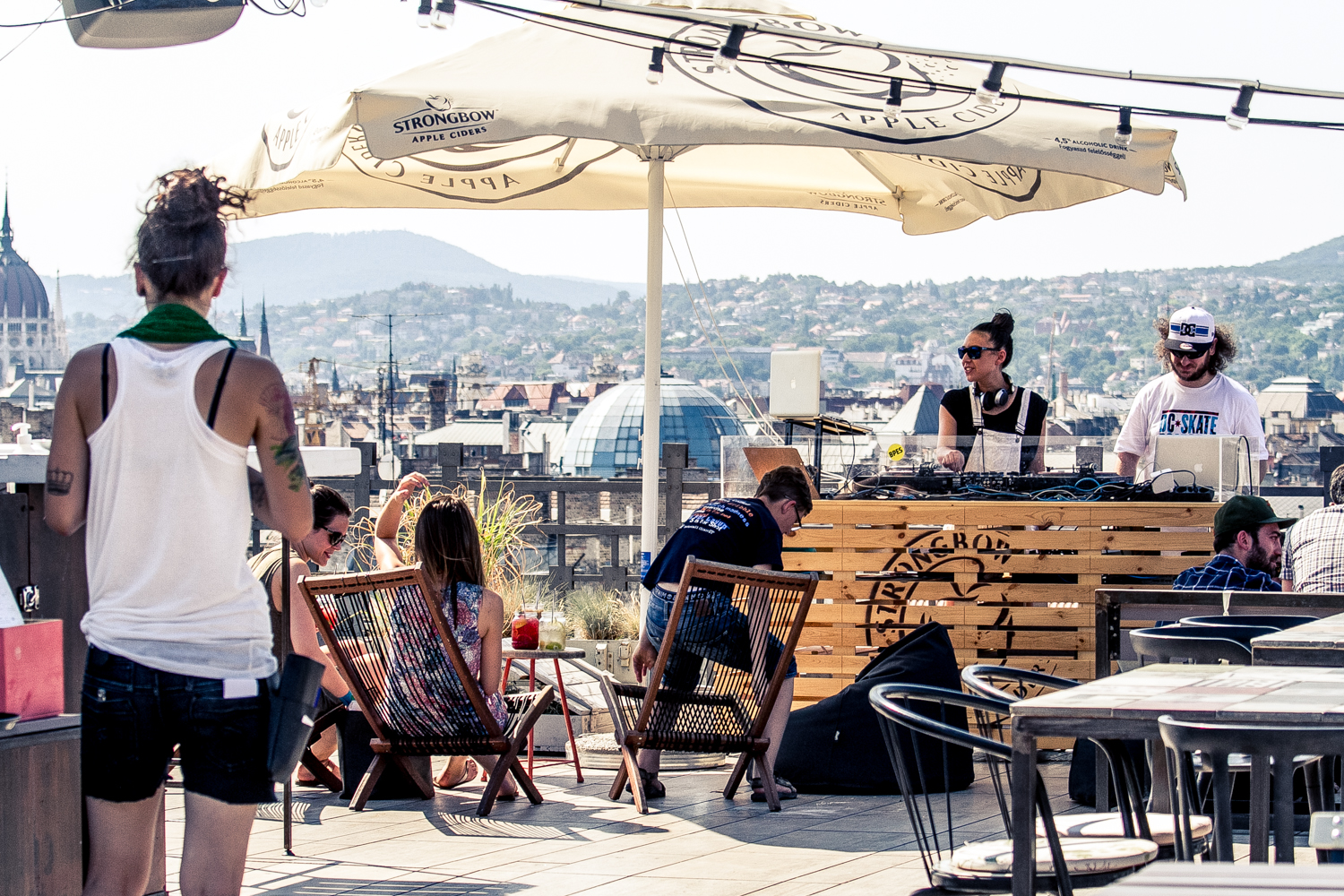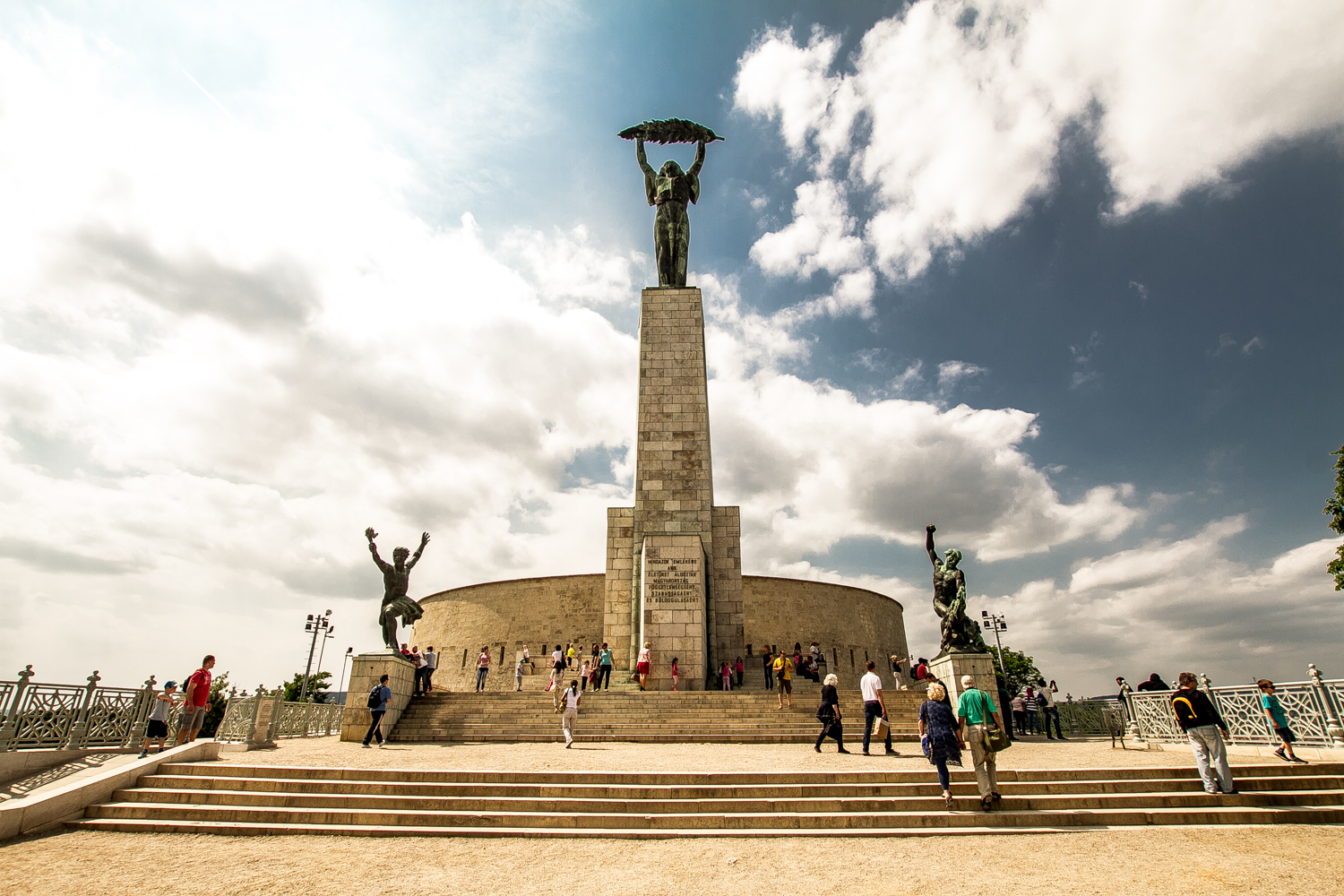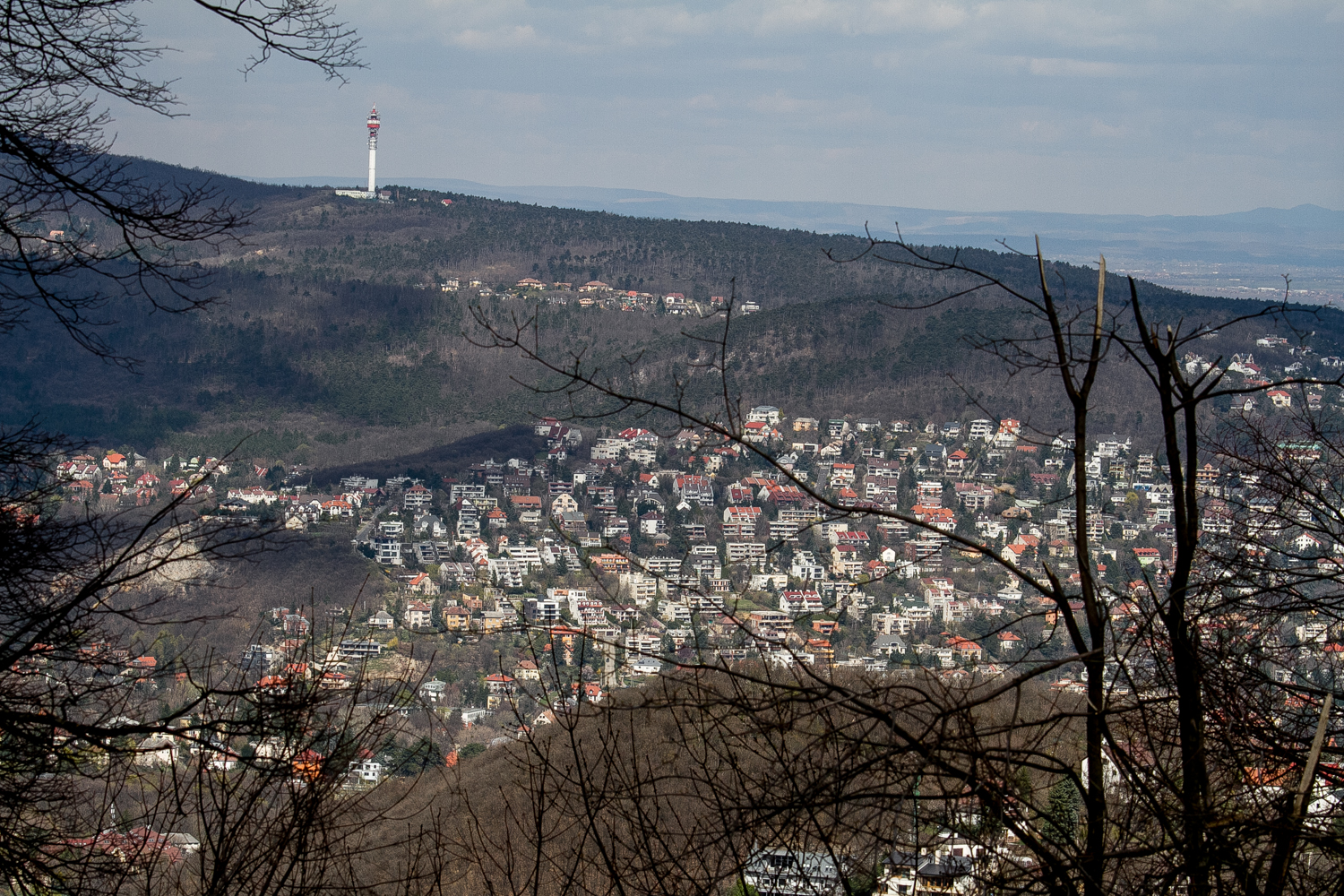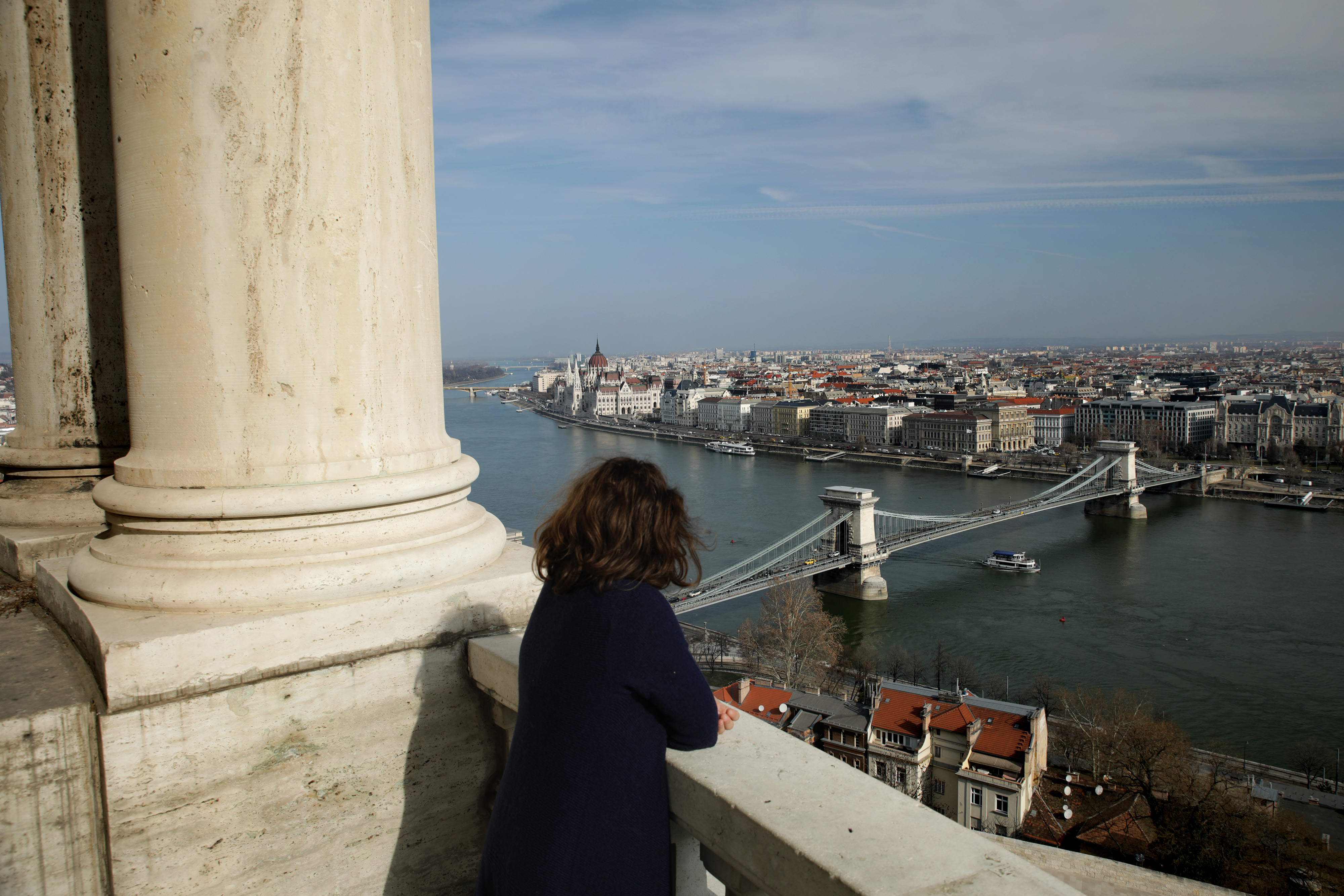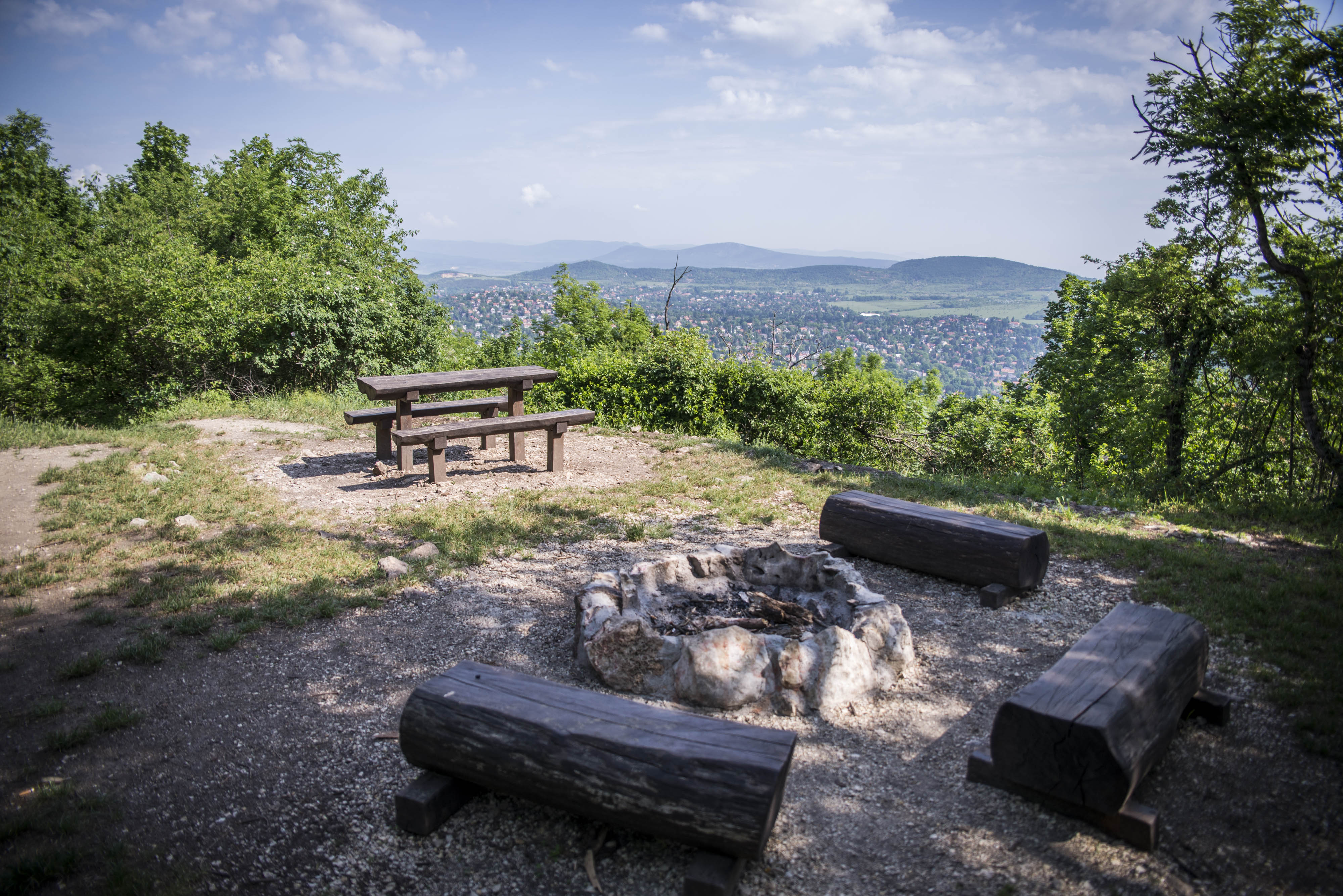There are various ways to view Europe’s most beautiful capital but the best is always from one of the city’s lofty vantage points. Here are our ten favourite spots from which to admire Budapest, with details of how to reach them.
1/10
360 Bar
Panoramically sited atop the tallest building on Budapest’s most elegant
boulevard, the former Paris Department Store on Andrássy út, the 360 Bar offers not only full panoramic
views but also quality cocktails, snacks and DJs. Sip a 360
Highlife (Beefeater pink gin, Aperol, lemon) while the beats pulse and the
lights blink on all across the city. This historic building at Andrássy út 39
stands between the Opera and Oktogon stops on yellow metro M1.
2/10
Citadella
Soon to receive a long-awaited makeover as a museum, with a cable car
also planned,
Citadella is the Habsburg fortress
that crowns Gellért Hill. Above
it rises the Statue of Lady Liberty, gazing down over the whole city and
visible from many points. As well as a favourite destination for tour buses,
Citadella is also where couples come for their wedding photos. Reaching it by
public transport isn’t straightforward, however – bus 27 from Móricz Zsigmond körtér
takes you as far as Sánc utca, about halfway up round the back of Gellért Hill.
Alternatively, fitter visitors can trek up from behind the Gellért Hotel,
past the playground and two lower observation terraces.
3/10
Elizabeth Lookout Tower
At 528 metres, this tower is the highest accessible point
in Budapest, a Habsburg-era confection built on top of János Hill by Frigyes Schulek
of Fishermen’s Bastion fame. It was named after Empress Elisabeth, known as and
revered by Hungarians as Sisi, whose assassination in 1898 shocked the nation.
As this was one of her favourite spots, locals decided to build a monument in
her honour. For a nominal admission fee, you can climb up the winding staircase to
reach the top – on a clear day, you can see as far as the High Tatras. The
nearest access point by public transport is Normafa (bus 21/21A from Széll Kálmán tér or Déli pályaudvar), from where it’s a short,
pleasant stroll through greenery before the calf-crunching climb up the hill
for five minutes. Alternatively, take the Children’s Railway to Normafa, close to the 21/21A bus stop.
4/10
Fishermen’s Bastion
Accessed by the Funicular or a short, steep climb up Castle Hill from Clark Ádám tér, ornate Fishermen’s Bastion was built by Frigyes Schulek as an afterthought once he had recreated Matthias Church next door. Its seven
turrets represent the seven Hungarian tribes who arrived here more than 1,000
years ago, and provide the perfect viewpoint over the Danube and Pest
skyline.
5/10
Harmáshatár Hill
It is no coincidence that Hármashatár Hill is among the most popular excursions in Budapest, particularly with kite-flyers
and those of the hang-gliding persuasion. There are look-out points and vantage
spots all over this expansive hilltop, across which winds the Károly Guckler trail,
leading to the observation tower of the same name. A polygonal pine tower perched
on a hill 495 metres high, it was designed by Ybl-award-winning architect József Koller,
and offers views of the all of Budapest’s bridges, even Megyeri.
The easiest way to reach here is bus
65 from Kolosy
tér, alighting at Fenyőgyöngye.
6/10
Hungarian National Gallery
Once topped by a lower roof,
the Royal Palace was severely damaged during World War II.
It was only during its reconstruction in the 1960s when the present-day dome was
installed. Its panoramic terrace was renovated and reopened in 2006. Directly beneath the colossal, slightly off-green
cupola is this vantage point, providing
far-reaching views over Buda, the Danube bridges and the Pest cityscape. Even
few locals know that between April and November, weather permitting, admission
to the National Gallery also allows you access to this unique eyrie. A narrow staircase winds
up to the panoramic terrace. To reach Buda Castle, either
take the Funicular or climb
up the steps from Clark Ádám tér.
7/10
Nagy-Hárs Hill
One of the many ideal aspects
of Hárs Hill is its easy access, by bus 22 or 22A from Széll
Kálmán tér, a 20-minute hop to Szépjuhászné station
on the Children’s Railway. That’s the start of a 4.5-km hike there
and back, marked with yellow signs. The terrain leading to the Károly Kaán Lookout Tower is light, and you can already get an inkling of the panorama at the Csanád
rest stop. Nature and the capital spread out around the tower: Citadella, Parliament,
the Danube and bridges, as well as Hármashatár Hill, János
Hill, Elizabeth Lookout Tower and Nagy-Kopasz.
Upon arrival, it is worth visiting Bátori Cave in the gorge
below the lookout, where Pauline monk László Bátori translated
the Bible for 20 years, and investigating the ruins of the Pauline Monastery
at Budaszentlőrinc by the Szépjuhászné stop. On the return
journey, you can make a detour to the less impressive but still pleasant
panorama of the Makovecz Lookout Tower.
8/10
St Stephen’s Basilica
Dominating the skyline of downtown Pest, the huge dome of St Stephen’s
Basilica took decades and three chief
architects to create, reaching the precise height of 96 metres. This was no
coincidence, as so many Budapest landmarks of the time were built to celebrate the
Hungarian millennial celebrations of 1896 – Parliament is as tall. For an admission fee of 1,500 forints, you can access the panoramic
walkway around the dome for a 360-degree view of downtown Pest, with the Danube
and Buda beyond. You can actually climb a little higher, and get a slightly
better view – plus a bird’s eye one of the Basilica clock tower itself – at the HighNote Sky
Bar atop the Aria Hotel.
These vistas also come with exquisite cocktails, of course. The Basilica is a
short walk from several downtown stops and stations, including M1 to Bajcsy-Zsilinszky,
bus 9 to Szent István Bazilika and M1-M2 Deák Ferenc tér. The M3 line for Arany
János utca/Deák Ferenc tér is currently under long-term repair.
9/10
Tomb of Gül Baba
A perfect spot for a romantic
rendezvous, the Tomb of Gül Baba is surrounded by beautiful gardens, renovated and reopened in 2018. The landmark honours Gül Baba, an Ottoman-era poet and philosopher who
died shortly after the Turkish conquest of Buda in the 1500s. Known as the Father of the
Roses, he is thought to have introduced the flower to Budapest, hence the
surrounding hill of Rózsadomb (’Rose Hill’). From his statue, a panoramic view
stretches all the way across the Danube. The walkways up to the site, near the
Buda foot of Margaret Bridge,
have also been revamped.
10/10
Zugliget Chairlift
The Chairlift, Libegő
to Hungarians, is a fun, alternative mode of transport in the Buda hills.
Transporting passengers between Zugliget and the road leading up to the
Elizabeth Lookout Tower, the Chairlift calmly takes you up the side of János
Hill in about 15 minutes – while providing panoramic views of the Buda
surroundings. Run by city transport company BKK, it’s accessed by a different
ticket (single HUF 1,200, return HUF 1,600), available at either terminus. To
reach it, take bus 291 from Nyugati station to its final stop (journey time 25
minutes).
